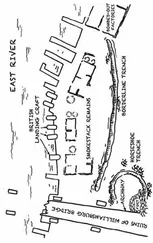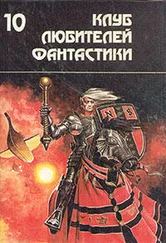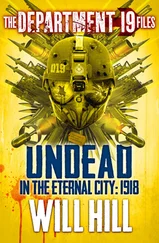While the ships sunk at Pearl Harbor had been caught at anchor in a surprise attack, we sank the two British ships in open combat. In this respect, the outcome was far more shocking than Pearl Harbor. That naval engagement proved that battleships with no escort fighters were easy prey for enemy aircraft.
Gone were the days of the Russo-Japanese War where fleets of ships faced each other in a decisive showdown. Now maritime battles pitted aircraft carriers against one another. Our Navy had six full-fledged carriers while the U.S. Pacific Fleet had five. We flexed our muscles in preparation for the carrier-on-carrier fight that we knew would come one day.
___
The chance came half a year after the start of the war. In May 1942, Japanese aircraft carriers supporting Army transport ships clashed head-on with U.S. carriers trying to prevent us from capturing Port Moresby, New Guinea. It was the world’s first battle between two aircraft carriers. Incidentally, there haven’t been any more carrier battles since Japan fought the U.S.
Unfortunately, my carrier, the Akagi, did not participate in that battle. The Shokaku and the Zuikaku of our Fifth Carrier Division fought the USS Lexington and the Yorktown. During this, the Battle of the Coral Sea, we sank the Lexington and severely damaged the Yorktown. On our side, the Shokaku was partially damaged while the Zuikaku was untouched. In the first-ever carrier vs. carrier battle, the Imperial Navy was victorious.
At the time, the aircrew of the First Carrier Division, assigned to the Akagi and the Kaga, was considered the most skilled. The next best was the Second Carrier Division, on the Hiryu and the Soryu. It was said that the Fifth Division on the Shokaku and the Zuikaku was slightly less capable. There was even a ditty about them that went, “If butterflies and dragonflies are birds, then so is the Fifth Division.” When those of us in the First Division heard of the outcome of the Battle of the Coral Sea, we ruefully said, “Both American carriers would have gone down, had it been us.”
The desire to take on a hostile carrier simmered in our veins. We got our chance a month later.
Yes, at the Battle of Midway.
___
It’s a very famous battle. Four of our carriers were sunk at once: the Akagi and the Kaga, namely the First Carrier Division and the pride of our Navy, and the Second Division’s Hiryu and Soryu.
After the war I read many books on the causes of our failure at Midway. Bottom line, it was all the fault of our military’s arrogance.
The U.S. forces had known all about our operation, having successfully decrypted our Navy’s code. Initially, though, their code-breaking team couldn’t figure out the location of “AF,” which we were targeting to capture. So the U.S. sent an unencrypted false message from the base at Midway that stated, “The water purification system has broken down and the base needs fresh water.” Soon after on the same day, our military sent a message stating that AF appeared to be short on water. Thus, the U.S. figured out that “AF” stood for Midway.
The Americans were on alert, ready and waiting to ambush us. Actually, the Combined Fleet HQ had anticipated as much. Part of its plan for capturing Midway was to lure out and destroy the U.S. carrier fleet. Therefore, you could also say the U.S. Navy was suckered in.
Before the battle, the feeling that it would be an easy victory was prevalent among our entire Navy. HQ seems to have thought that the Americans might be too frightened of our might even to pit their carriers against us. I found this out in later years, but during the planning stages at HQ, when a certain commander asked Minoru Genda, senior staff officer for aviation, “What will happen if the enemy’s aircraft carriers attack us at Midway?” he’s said to have replied, “We’ll beat ’em hands down,” which indeed would have been typical. Slightly before that, on Hirashima Island in Yamaguchi, when HQ staffers were divided into friends and foes to do a map exercise of the Battle of Midway, nine bombs managed to strike the Japanese carriers. Chief of Staff Ugaki saw this and said, “I call one third of that—make it three,” and continued the exercise, never revising the battle plan. There’s no point in such a map exercise.
There were other instances of carelessness. We were supposed to deploy a submarine squad off the coast of Hawaii to detect the U.S. carrier fleet’s departure, but by the time the subs got there the fleet had already left Hawaii. This, too, was probably due to the misguided assumption that the U.S. carriers wouldn’t head out at all.
Over sixty years have passed, but I still clearly remember the events of that day—the Imperial Navy’s, no, Japan’s worst day. Of course, more terrible debacles would come. But everything started to go bad at Midway.
I took off in the morning as part of the escort for the bombers heading out to strike the base on Midway. The battle plan was two-fold: attack the base on Midway, and destroy the enemy Mobile Task Force if they showed up. Recon teams were being sent out constantly to search for the enemy.
In a carrier-on-carrier battle, the outcome is dependent upon good recon. Find the enemy task force speeding around the vast Pacific faster than they can find yours, and hit them. That was the essence of a carrier battle.
As I said earlier, the first such engagement was the Battle of the Coral Sea. Actually, something odd happened then. Both sides located each other and launched their bombers, but neither attack force was able to come into contact with the enemy fleet, and the first waves fizzled out. That’s when the incident occurred.
Failing to find the enemy’s task force, our Fifth Division’s attack force returned to the carriers at night. Landing on one at night is very difficult. The first plane mistimed the landing and simply flew over the ship. It was then that the pilot realized the carrier was American! That pilot must have gotten quite the shock. The enemy carrier they’d tried so hard to find was right there where he thought his mothership would be.
That’s how difficult battles involving high-speed mobile forces are. The carriers on both sides are moving at a rate of about 50 kilometers per hour. In two hours, they can end up putting 200 more kilometers between them. As a result, it was a given that when you returned, your carrier was in a very different location from when you sortied. That’s how a pilot could find himself attempting a landing on an enemy carrier. I’m sure the American crew was just as astonished.
In the end, the attack force fled from the enemy carrier and made it back to their own carriers, but the whole episode sounds like a bad joke, doesn’t it?
The next morning, both carrier groups sent out reconnaissance planes to locate each other again. A recon plane from the Shokaku discovered an enemy carrier and kept the American fleet in sight, communicating their position to our forces, until it was nearly out of fuel. Attack forces immediately took off from Shokaku and Zuikaku, and along the way they passed the recon plane. It had been heading back, but it turned around and guided the attackers to the enemy position. The plane had been on its way back because it was out of fuel. Guiding friendly aircraft to the enemy meant not making it back alive.
That reconnaissance plane was a Type 97 carrier-based attack bomber, and its leader was Flight Chief Petty Officer Kenzo Kanno, the spotter and bombardier. The other two crewmembers were FPO1 Tsuguo Goto, the pilot, and FPO1 Seijiro Kishida, the radio operator. Those three threw away their lives, praying that their comrades would triumph over the enemy.
Читать дальше

![Nick Cracknell - The Quiet Apocalypse [= Island Zero]](/books/28041/nick-cracknell-the-quiet-apocalypse-island-zero-thumb.webp)










